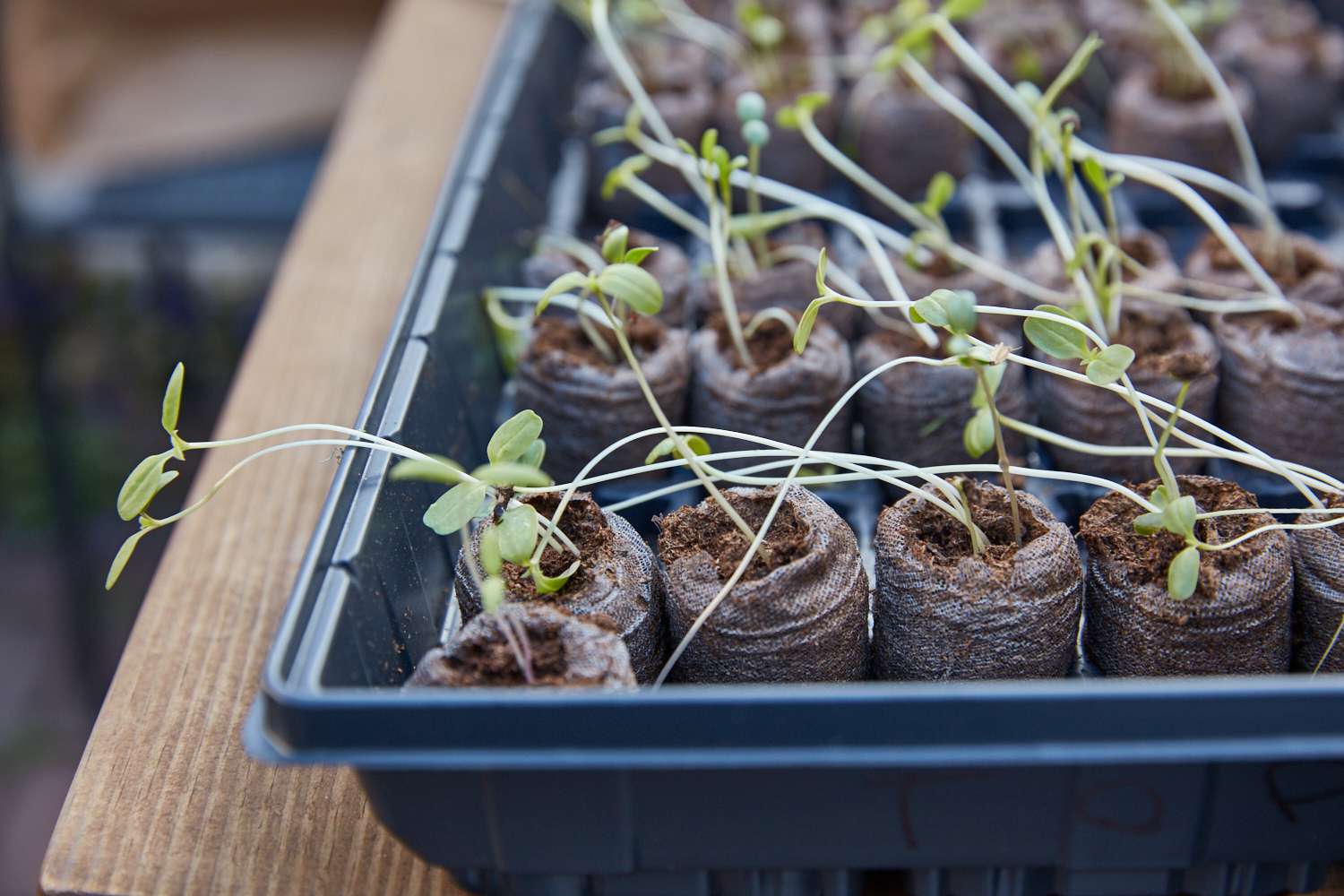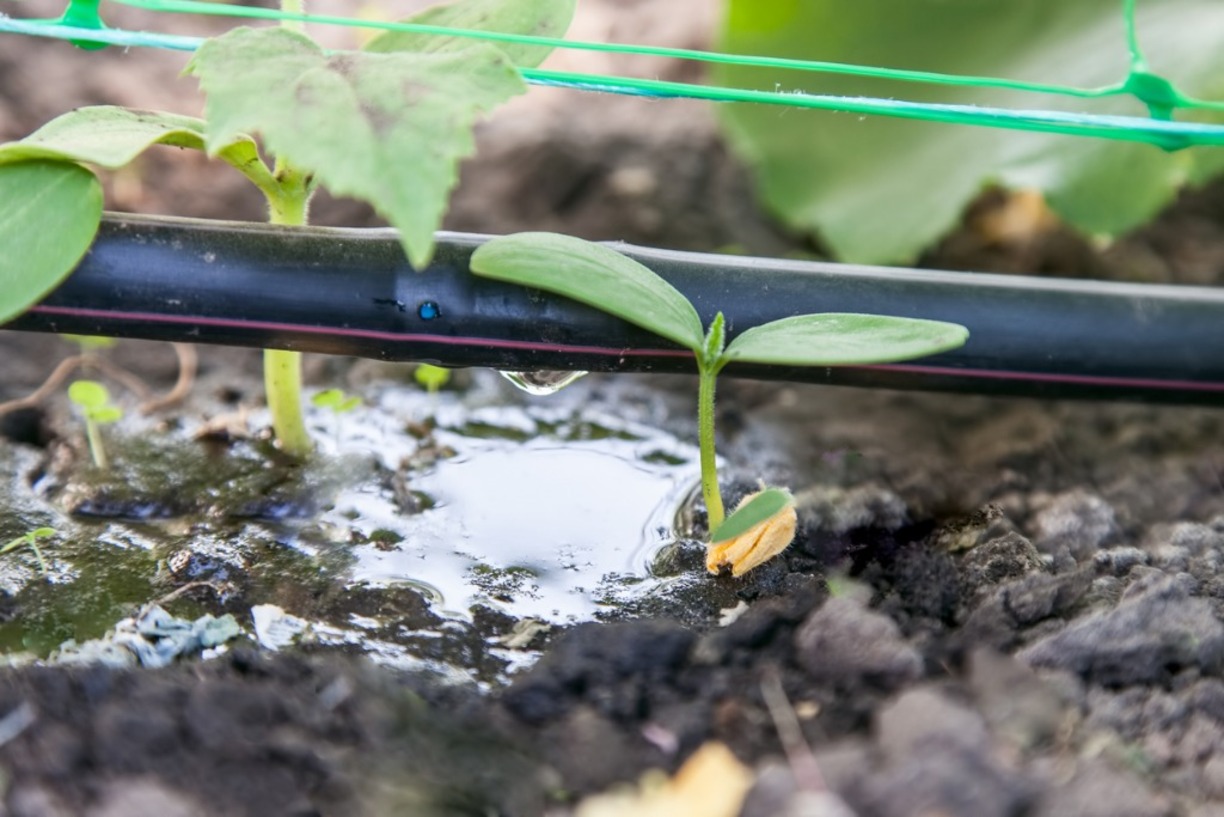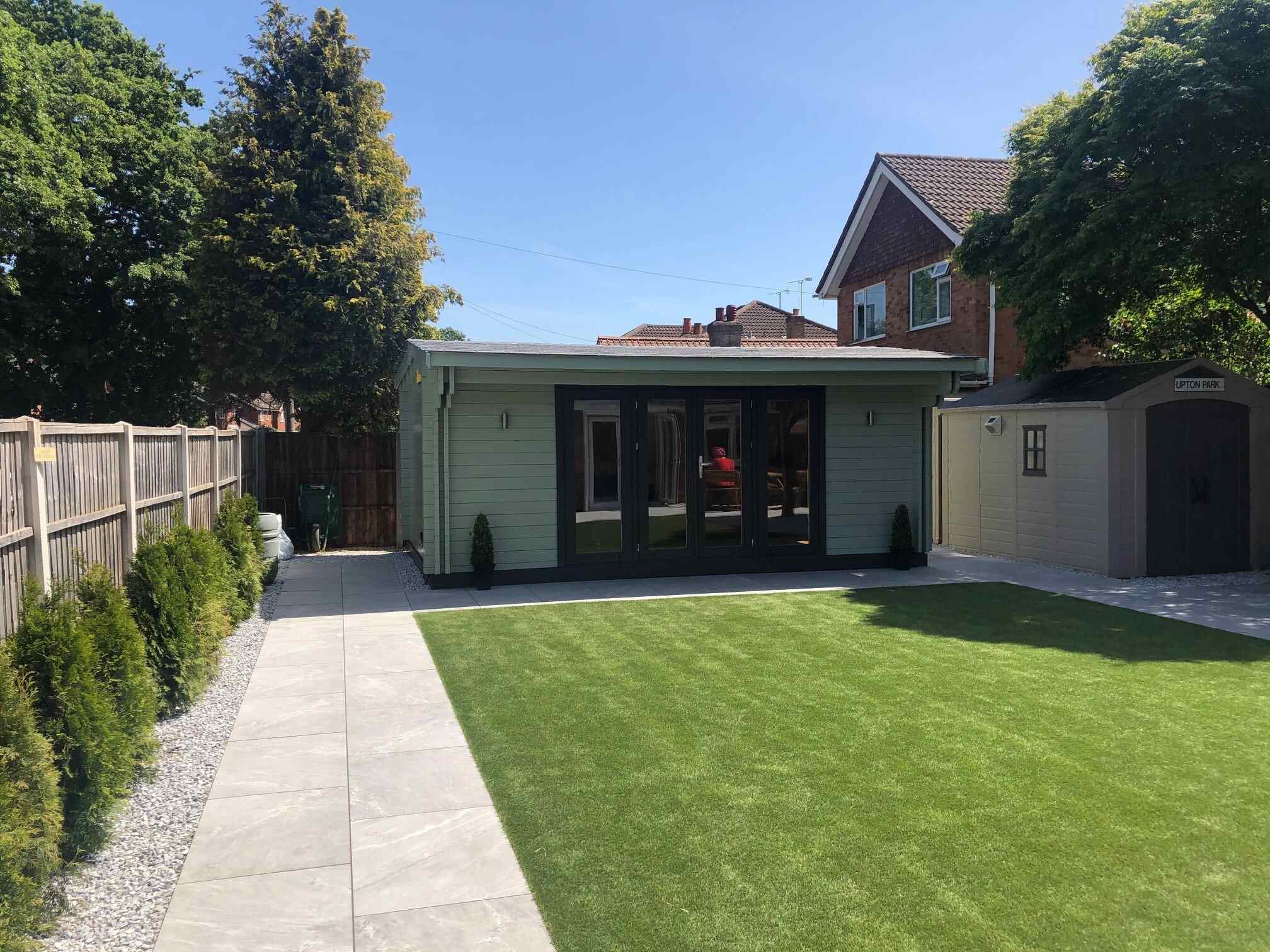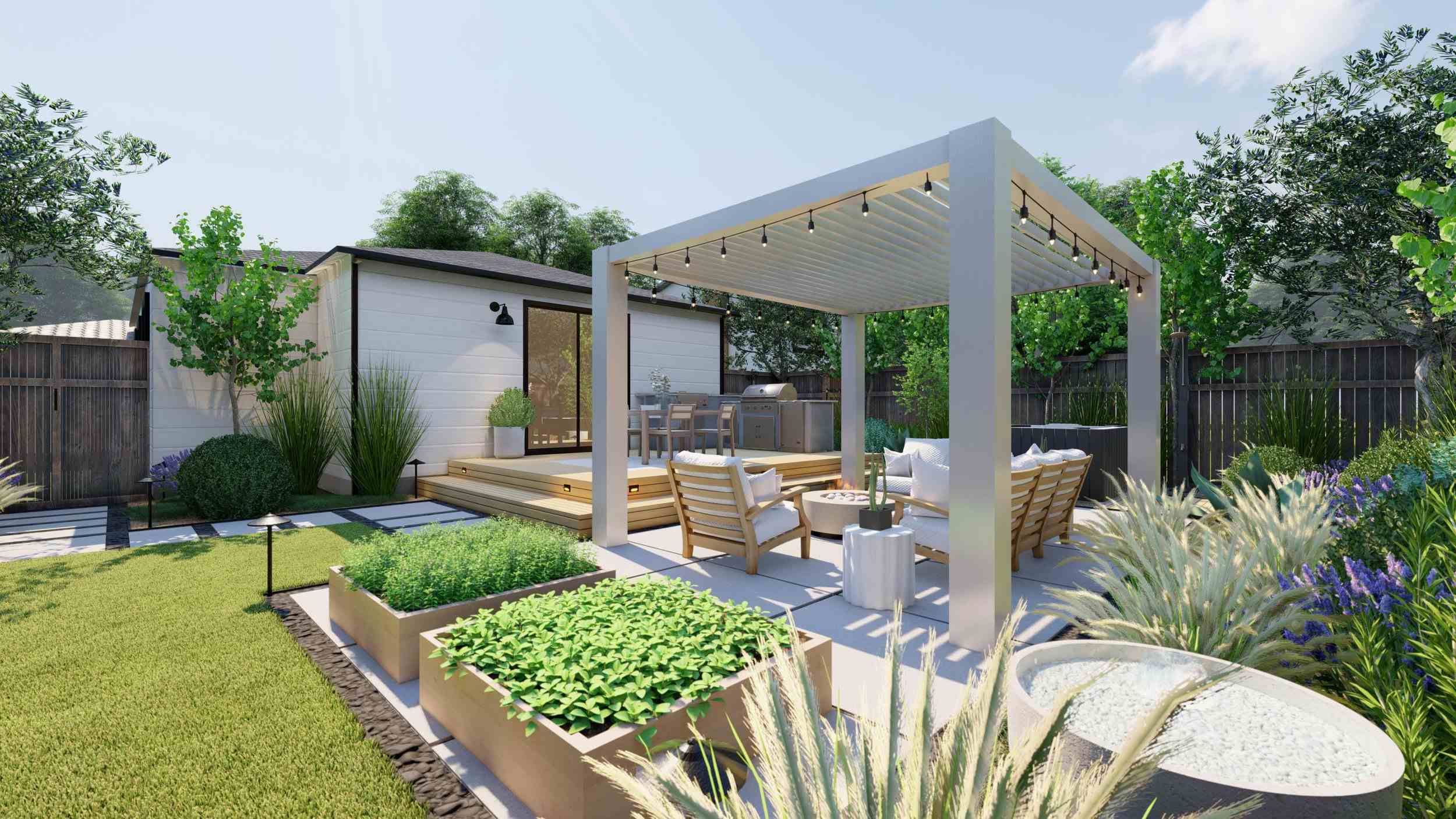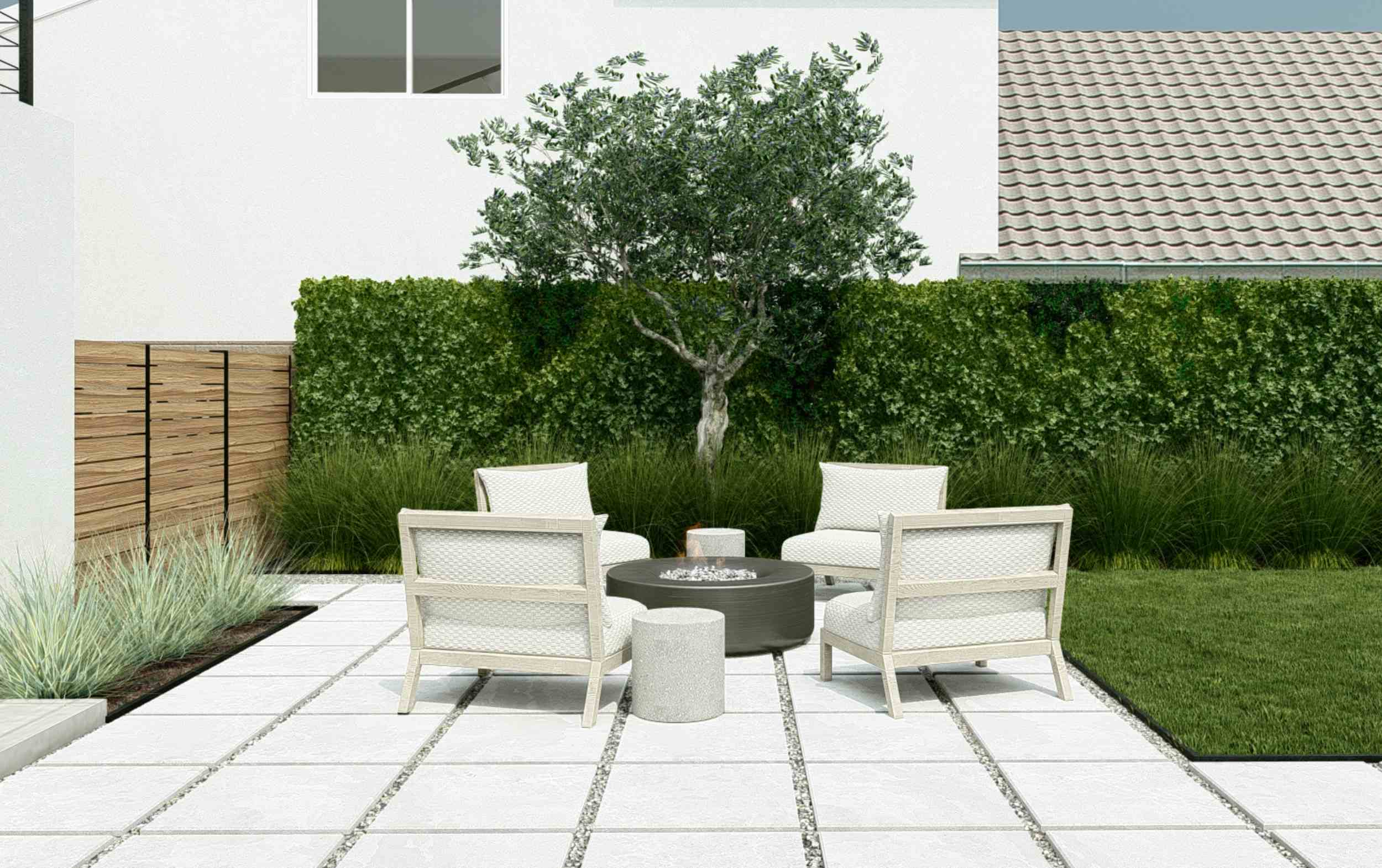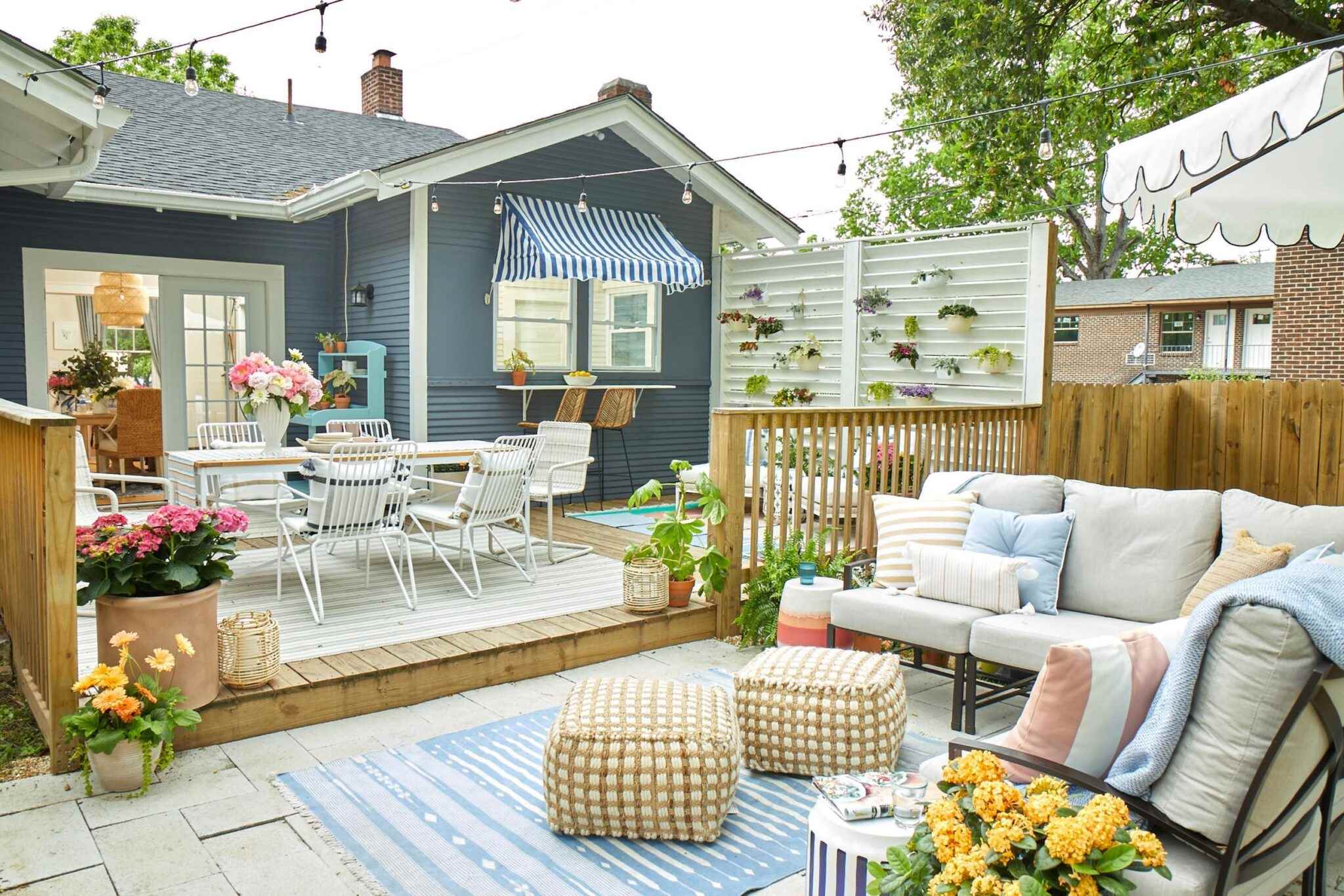Home>Gardening Tips and Tricks>How To Fix Backyard
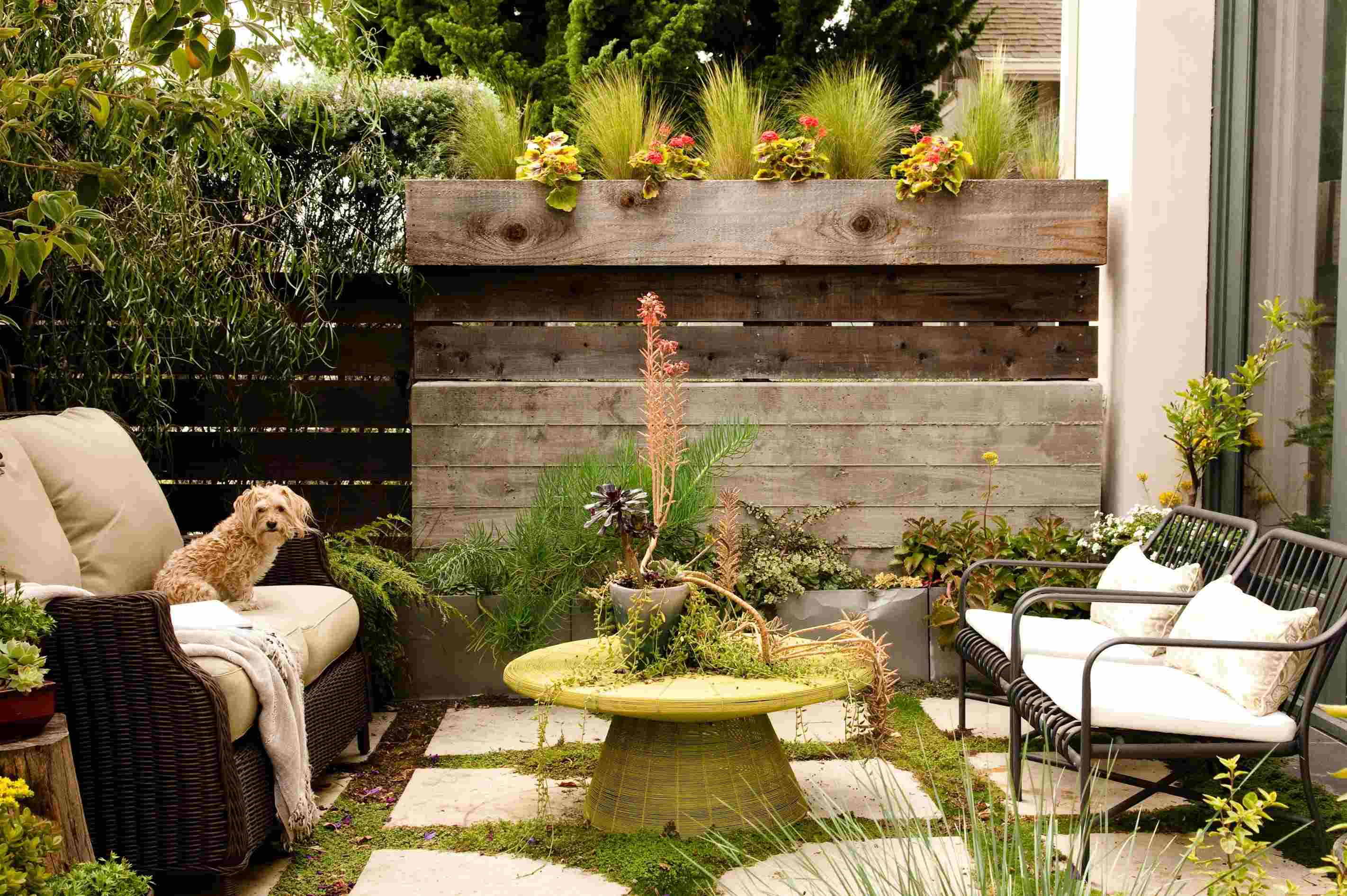

Gardening Tips and Tricks
How To Fix Backyard
Modified: February 8, 2024
Learn effective problem solving techniques to fix backyard issues with our comprehensive guide on how to fix backyard. Take control of your outdoor space and create the perfect backyard oasis.
(Many of the links in this article redirect to a specific reviewed product. Your purchase of these products through affiliate links helps to generate commission for Chicagolandgardening.com, at no extra cost. Learn more)
Table of Contents
- Introduction
- Assessing the Current State of Your Backyard
- Clearing and Cleaning the Backyard
- Fixing Uneven Ground
- Repairing or Building a Fence
- Revitalizing the Lawn
- Creating Functional Outdoor Spaces
- Installing Outdoor Lighting
- Choosing and Planting Suitable Vegetation
- Adding a Water Feature
- Maintaining Your Fixed Backyard
- Conclusion
Introduction
Welcome to the ultimate guide on how to fix your backyard and transform it into a beautiful, functional outdoor space. Your backyard is an extension of your home, a place where you can relax, entertain, and unwind. However, over time, neglect and wear can take a toll on its appearance and usability. If your backyard is in need of some TLC, don’t worry – we’ve got you covered.
In this comprehensive guide, we will take you through a step-by-step process of assessing the current state of your backyard, clearing and cleaning the space, fixing uneven ground, repairing or building a fence, revitalizing the lawn, creating functional outdoor spaces, installing outdoor lighting, choosing and planting suitable vegetation, adding a water feature, and finally, maintaining your newly fixed backyard.
Whether you’re a seasoned DIY enthusiast or a beginner, these tips and techniques are tailored to help you achieve impressive results. Our focus is not only on improving the aesthetics of your backyard but also on enhancing its functionality. We want to create a space that you’ll love and enjoy for years to come, and that will impress your family, friends, and neighbors.
So, grab your gardening gloves, roll up your sleeves, and get ready to transform your backyard into a haven of relaxation and entertainment. Let’s get started on fixing your backyard!
Assessing the Current State of Your Backyard
Before diving into any backyard fixes, it’s important to assess the current state of your outdoor space. This will help you identify the areas that need the most attention and prioritize your efforts.
Start by taking a walk around your backyard and observing its overall condition. Look for any obvious issues such as overgrown vegetation, damaged structures, or uneven ground. Take note of any areas that seem cluttered or underutilized.
Next, evaluate the functionality of your backyard. Consider how you currently use the space and whether it meets your needs. Are there areas for relaxation, dining, and entertaining? Are there any elements that are missing or need improvement?
Consider the aesthetics of your backyard as well. Is the overall design cohesive and visually appealing? Are there any eye-catching features that you would like to enhance or accentuate?
Lastly, consider the practical aspects of your backyard. Are there any drainage issues that need to be addressed? Is your current fencing in good condition and providing the necessary privacy and security?
Once you have assessed the current state of your backyard, you will have a better understanding of what areas require the most attention and what improvements will make the most impact. This preliminary evaluation will serve as a foundation for the rest of your backyard fixing journey.
In the following sections, we will guide you through specific steps and techniques to address the issues you have identified and transform your backyard into a space that is both visually pleasing and functional. Let’s roll up our sleeves and begin the process of fixing your backyard!
Clearing and Cleaning the Backyard
Before you can start making any major changes to your backyard, it’s crucial to clear away any clutter and give the space a thorough cleaning. This will provide a clean slate to work with and make the fixing process much easier.
Begin by removing any debris such as fallen branches, leaves, or trash. Use a rake or a leaf blower to gather the debris into piles, and then dispose of it properly. This step will not only make your backyard look cleaner but will also help prevent potential hazards.
Next, assess any unwanted vegetation, such as weeds or overgrown plants. Pull out any weeds by the roots and trim back any overgrown plants or bushes. This will help create a neater and more visually appealing space.
If your backyard has any old, broken, or unused items such as furniture, toys, or equipment, consider removing them. These items can create clutter and take up valuable space that could be better utilized. If anything is still in good condition, you may want to consider donating or selling it.
Once you have cleared away the clutter, it’s time to give your backyard a deep clean. Sweep or power wash any hard surfaces, such as patios, decks, or paths. Remove any dirt, grime, or stains that may have accumulated over time. This will not only improve the appearance but also make these areas safer to walk on.
Don’t forget about cleaning any outdoor furniture or fixtures you may have. Wipe down tables, chairs, and cushions, and clean any light fixtures or outdoor decorations. Freshening up these elements will contribute to an overall cleaner and more inviting backyard.
Finally, assess the condition of your outdoor storage areas, such as sheds or garages. Organize and declutter these spaces, discarding any items you no longer need or use. This will help create a more organized and functional backyard.
By clearing and cleaning your backyard, you have laid the foundation for the fixing process. You now have a clean and clutter-free space to work with, allowing you to focus on the necessary improvements to transform your backyard into a beautiful and functional outdoor oasis.
Fixing Uneven Ground
Uneven ground can not only be unsightly in your backyard, but it can also pose safety hazards and make it difficult to use the space effectively. Fortunately, there are several methods you can employ to fix uneven ground and create a level surface.
The first step in fixing uneven ground is to identify the areas that need attention. Walk around your backyard and look for any noticeable dips, bumps, or slopes. These could be caused by factors such as settling soil, erosion, or poor drainage.
Once you have identified the uneven areas, you can choose the appropriate method to fix them. One option is to use topsoil to fill in low spots and create a more even surface. Make sure to remove any vegetation or debris from the area before adding the topsoil. Spread a layer of topsoil over the low areas, level it with a rake, and pack it down firmly. This will help create a smooth and level surface.
If the unevenness is more significant, you may need to consider more extensive solutions such as grading or re-sloping the area. This may involve bringing in professionals who can assess the situation and make the necessary adjustments to create a level grade in your backyard.
In some cases, installing retaining walls or terracing the uneven areas can be an effective solution. These structures can help prevent soil erosion and create level platforms for gardening or seating areas. However, these methods may require more advanced skills and expertise, so it’s advisable to consult with professionals to ensure proper construction and stability.
For smaller, localized uneven spots, you can use leveling compounds or DIY methods such as adding a layer of sand or gravel to even out the surface. However, keep in mind that these solutions may be temporary and may require periodic maintenance or adjustment.
Fixing uneven ground in your backyard will not only improve the appearance and safety of the space but will also make it easier to install features such as pathways, patios, or garden beds. Creating a level surface will provide a solid foundation for any future outdoor projects you may have in mind.
By addressing the issue of uneven ground, you are one step closer to transforming your backyard into a more functional and visually appealing outdoor space. Let’s move on to the next step in fixing your backyard.
Repairing or Building a Fence
A fence serves multiple purposes in a backyard. It provides privacy, security, and can even enhance the aesthetic appeal of your outdoor space. If your existing fence is damaged or non-existent, repairing or building a new fence should be a priority in your backyard fixing journey.
The first step is to assess the current condition of your fence. Look for any broken or rotting boards, loose or missing fasteners, or damaged posts. If the damage is minimal, you may be able to repair the fence by replacing individual components. However, if the fence is heavily damaged or beyond repair, it may be more cost-effective to build a new fence entirely.
If you’re repairing the fence, start by removing any damaged boards or fasteners. Replace them with new, sturdy ones and ensure they are securely fastened. If your fence is made of wood, consider applying a fresh coat of paint or stain to protect it from weathering and enhance its appearance.
When building a new fence, first determine the type and design that best suits your needs and complements your backyard’s style. Popular choices include wood, vinyl, metal, or composite materials. Consider factors such as durability, maintenance requirements, and budget when making your decision.
Next, mark the boundaries and install the fence posts at regular intervals along the perimeter. Use a post-hole digger to create holes of the appropriate depth, ensuring they are evenly spaced. Place the posts in the holes, making sure they are level and securely anchored. Fill the holes with concrete or gravel to provide stability.
Once the posts are in place, attach the fence panels or boards, ensuring they are straight and properly aligned. Consider adding decorative elements or features to enhance the visual appeal of the fence. This could include lattice panels, post caps, or decorative trim.
Remember to check with local building codes and regulations before proceeding with fence repairs or construction. Some areas may have restrictions on the height, style, or materials used for fences.
A well-maintained fence can add value and charm to your backyard. It creates a barrier between your space and the outside world, providing privacy and security. Whether you’re repairing an existing fence or building a new one, investing time and effort into this step will greatly enhance the overall functionality and appearance of your backyard.
Now that you have addressed the fencing aspect of your backyard, let’s move on to revitalizing the next element in our fixing journey.
Revitalizing the Lawn
A healthy and vibrant lawn can significantly enhance the overall look and feel of your backyard. If your lawn is looking dull, patchy, or overgrown, it’s time to revitalize it and bring it back to life.
The first step in revitalizing your lawn is to assess its current condition. Look for areas with bare patches, weeds, or compacted soil. Determine the type of grass you have and research the best practices for maintaining that particular species.
Start by removing any weeds or unwanted vegetation from the lawn. Use a weed killer or manually pull out the weeds, ensuring you remove the roots. This will prevent the weeds from competing with the grass for nutrients and sunlight.
If your lawn has bare patches, you can reseed or lay new sod to fill in the gaps. Prepare the soil by raking it to loosen any compacted areas. Spread a thin layer of topsoil over the bare patches, then sow the grass seeds or lay the sod. Water the area regularly to promote germination or establishment.
To encourage healthy growth, regularly mow your lawn to a suitable height. Different grass species have different optimal heights, so research and adjust the mowing height accordingly. Avoid cutting the grass too short, as this can stress the plants and make them more susceptible to disease and weed invasion.
Proper watering is crucial for maintaining a lush lawn. Water deeply and infrequently, rather than frequent shallow watering. This encourages the grass roots to grow deeper and makes the lawn more resilient to drought. Water early in the morning to allow the grass blades to dry, reducing the risk of fungal diseases.
Fertilizing your lawn can provide essential nutrients to promote healthy growth. Choose a high-quality lawn fertilizer and apply it according to the manufacturer’s instructions. Avoid over-fertilizing, as this can lead to excessive growth or burning of the grass.
Aeration is another important step in revitalizing your lawn. It helps to alleviate soil compaction, improve nutrient and water absorption, and promote healthy root growth. You can rent an aerator or hire a professional to perform this task.
Regular maintenance is key to keeping your lawn healthy and vibrant. This includes periodic dethatching to remove the layer of dead grass and debris, as well as overseeding to fill in thin areas. Additionally, be vigilant for any signs of pests or diseases and address them promptly.
Revitalizing your lawn may take time and effort, but the results are well worth it. A lush and green lawn will provide a beautiful backdrop for the rest of your backyard and create a welcoming atmosphere for outdoor activities and relaxation.
Now that we’ve revitalized the lawn, let’s move on to creating functional outdoor spaces in your backyard.
Creating Functional Outdoor Spaces
Your backyard is more than just a patch of grass – it’s an opportunity to create functional outdoor spaces that cater to your lifestyle and needs. Whether you enjoy dining alfresco, hosting gatherings, or simply relaxing in the fresh air, designing specific areas for different activities will make your backyard more enjoyable and purposeful.
Begin by evaluating how you currently use your outdoor space and what activities you would like to incorporate. Consider your interests and hobbies, as well as the needs of your family or guests. Do you need a dedicated dining area, a cozy seating nook, or perhaps a space for children to play?
Divide your backyard into separate zones, each with a specific purpose. For example, designate an area for outdoor dining by placing a table and chairs under a pergola or patio umbrella. Create a comfortable seating area with outdoor sofas, chairs, and a coffee table for relaxation and conversation.
If you have limited space, vertical gardening or hanging planters can maximize your greenery without sacrificing functionality. Install shelves or hooks on walls or fences to display potted plants or outdoor decor.
Consider incorporating features such as a fire pit or an outdoor kitchen to further enhance functionality and provide additional entertainment options. A fire pit can create a cozy gathering spot, while an outdoor kitchen can make hosting outdoor parties and barbecues a breeze.
Don’t forget about shading and protection from the elements. Install a pergola or awning to provide shade and shelter from the sun or rain. Add outdoor curtains or a retractable canopy to create privacy or block out intense sunlight.
Incorporate functional lighting to extend the usability of your outdoor spaces into the evening hours. Strategically placed pathway lights, string lights, or spotlights can create ambiance and ensure safe navigation.
It’s important to remember that the design and layout of your functional outdoor spaces should be tailored to your specific needs and preferences. Consider how the different zones flow together and how they integrate with the overall aesthetic of your backyard.
By creating distinct outdoor areas, you’ll maximize the usability of your backyard and ensure that it serves your specific needs. These functional spaces will not only enhance your enjoyment but also add value to your home, making it an inviting place to spend time with family and friends.
Now that you’ve created functional outdoor spaces, let’s move on to the next step of fixing your backyard – installing outdoor lighting.
Installing Outdoor Lighting
Outdoor lighting plays a crucial role in enhancing the functionality, safety, and ambiance of your backyard. It extends the usability of your outdoor spaces into the evening hours and adds a touch of charm to your overall landscape. Whether you want to illuminate pathways, highlight architectural features, or create a warm and inviting atmosphere, installing outdoor lighting will transform your backyard into a captivating oasis.
Start by determining the areas that you want to illuminate. Pathways, patios, decks, and entrances are key areas that should be well-lit for safety and convenience. Consider spotlighting architectural elements, trees, or landscaping to create visually appealing focal points.
There are various types of outdoor lighting to choose from, each serving a specific purpose. For general lighting, consider using overhead or wall-mounted fixtures. These can provide ample illumination for larger areas or walkways.
For accent lighting, use spotlights or well lights to highlight specific features such as trees, statues, or flower beds. This type of lighting enhances the visual appeal of your backyard and creates a focal point of interest.
Pathway lighting is essential for safe navigation. Use low-level lighting fixtures along your walkways or install solar-powered pathway lights for an energy-efficient option.
Consider installing deck or patio lights to create a warm and inviting atmosphere for outdoor gatherings or evening relaxation. These can be integrated into the structure or mounted on posts or railings for added functionality and aesthetics.
When installing outdoor lighting, make sure to use weather-resistant fixtures that are designed for outdoor use. Ensure that all electrical connections are properly sealed and protected from the elements.
As for the lighting technology, LED lights are an eco-friendly and cost-effective option. They consume less energy, have a longer lifespan, and provide a variety of lighting options, including different colors and brightness levels.
Strategically place your outdoor lighting fixtures to achieve the desired effect. Experiment with different angles and positions to create a balance between functional illumination and artistic expression.
Automating your outdoor lighting with timers or motion sensors can enhance convenience and energy efficiency. Automatic timers can turn on your lights at dusk and off at a predetermined time, while motion sensors can provide security and only activate the lights when someone is present.
By installing outdoor lighting, you can extend the use of your backyard into the evening hours and create a captivating ambiance. This will not only enhance the functionality and safety of your outdoor spaces but also add a touch of elegance and charm to your overall landscape.
Now that you’ve illuminated your backyard, it’s time to explore the next step – choosing and planting suitable vegetation.
Choosing and Planting Suitable Vegetation
Vegetation plays a vital role in transforming your backyard into a lush and inviting space. Selecting and planting suitable plants, trees, and flowers will not only enhance the visual appeal of your outdoor area, but also create a harmonious and vibrant environment. Whether you prefer low-maintenance greenery, colorful blooms, or a mix of both, choosing the right vegetation will bring life and character to your backyard.
Start by considering the climate and growing conditions in your area. Some plants thrive in sunny locations, while others prefer shade. Take note of the sunlight exposure, soil type, and water availability in different parts of your backyard.
Research different plant varieties that are well-suited to your climate and meet your preferences. Consider factors such as their growth habits, height, foliage colors, and flowering seasons. Look for plants that are known for their durability and resistance to pests or diseases.
When selecting trees, consider their mature size and how they will fit into your overall landscape. Trees can provide shade, privacy, and a beautiful focal point. Choose species that have a growth habit that complements your backyard’s design and won’t overshadow other features.
When it comes to flowers and shrubs, choose a variety that will provide continuous blooms throughout the growing season. Consider the color palette you want to incorporate and how the blooms will complement the surrounding vegetation and outdoor décor.
Group plants with similar water requirements together to make watering more efficient. Consider incorporating drought-tolerant plants or native species that are adapted to your region’s climate. This will reduce water consumption and the need for frequent maintenance.
Before planting, prepare the soil by removing any weeds, rocks, or debris. Add organic matter such as compost or well-rotted manure to improve soil fertility and drainage. Follow the planting instructions for each specific plant, ensuring they are placed at the appropriate depth and spaced adequately apart.
Create a well-designed layout by arranging plants in a way that flows naturally and considers their mature size and growth habits. Consider using different heights, textures, and colors to create visual interest and balance throughout your backyard.
Regularly water, feed, and prune your vegetation to maintain its health and appearance. Mulching around plants will help retain moisture, suppress weed growth, and improve the overall aesthetics of your garden.
Adding suitable vegetation to your backyard will provide shade, privacy, and a connection with nature. It will soften the hardscape elements and create a harmonious environment that encourages relaxation and enjoyment of the outdoors.
Now that you’ve chosen and planted suitable vegetation, it’s time to explore the next step – adding a water feature to your backyard.
Adding a Water Feature
A water feature can take your backyard to the next level, providing a soothing and tranquil atmosphere. The gentle sound of flowing water and the mesmerizing sight of a fountain or pond can create a focal point and enhance the overall ambiance of your outdoor space. Whether you prefer a small tabletop fountain or a large pond with cascading waterfalls, adding a water feature will bring a sense of serenity and beauty to your backyard.
Start by considering the available space and the style of your backyard. Determine where the water feature will be situated and how it will fit into the overall landscape. Take measurements to ensure that the size and scale of the water feature are suitable for your area.
There are various types of water features to choose from, depending on your preferences and the size of your backyard. Some popular options include fountains, ponds, waterfalls, and streams. Research different styles and designs to find the one that resonates with your vision.
Consider the maintenance requirements and ongoing care associated with each type of water feature. Some may require regular cleaning and maintenance to keep the water clear and prevent algae growth. Others may need winterizing or adjusting water levels depending on the season.
When installing a water feature, it’s important to follow proper safety measures. Ensure that all electrical connections and wiring are done by a professional to avoid any hazards. If you’re planning to have fish or aquatic plants in your water feature, make sure the ecosystem is appropriate for their needs.
Enhance the visual appeal of your water feature by incorporating elements such as rocks, pebbles, or aquatic plants. These will add texture, color, and visual interest to your backyard oasis. Consider plants such as water lilies, water hyacinths, or reeds that thrive in aquatic environments.
Lighting is an essential aspect of water features, as it can dramatically enhance their beauty during the evening hours. Consider installing underwater lights or spotlights to illuminate waterfalls, streams, or the surface of the water. This will create a stunning visual effect and allow you to enjoy your water feature even after the sun sets.
A water feature can become a focal point for relaxation, meditation, or social gatherings. Pair it with surrounding seating, outdoor furniture, or a pergola to create a designated area for tranquil moments or entertaining guests.
Adding a water feature will not only elevate the aesthetics of your backyard but also provide a soothing and calming environment. It will create a sense of serenity and allow you to escape from the stresses of everyday life right in your own outdoor space.
Now that you’ve added a beautiful water feature to your backyard, let’s move on to the next step – maintaining your fixed backyard.
Maintaining Your Fixed Backyard
After investing time and effort in fixing and enhancing your backyard, it’s important to establish a maintenance routine to keep it looking its best. Regular upkeep will ensure that your outdoor space remains functional, beautiful, and enjoyable for years to come. By following a few simple maintenance practices, you can preserve the results of your hard work and make the most of your fixed backyard.
One of the key aspects of maintaining your fixed backyard is keeping up with regular cleaning. Clear away debris, leaves, and fallen branches regularly to keep the space tidy and prevent potential hazards. Sweep or power wash hard surfaces such as pathways, patios, and decks to remove dirt and grime.
Keep an eye out for weeds and unwanted vegetation. Pull out weeds as soon as they appear to prevent them from spreading and competing with your desirable plants. Trim back overgrown vegetation and shrubs to maintain a neat and manicured appearance.
Regularly mow your lawn at the appropriate height to keep it healthy and looking well-groomed. As needed, apply fertilizers and weed control products to promote lush green growth and minimize weed infestation. Water your lawn and other plants consistently, providing deep irrigation rather than frequent shallow watering.
Inspect your fencing, gates, and outdoor structures for any signs of damage or wear. Repair or replace broken boards, secure loose screws or hinges, and touch up any necessary paint or stain. Regularly clean and maintain your outdoor furniture, cushions, and accessories to ensure they stay in good condition.
Monitor your water features for proper functioning and cleanliness. Keep the water clean and clear by removing debris and regularly checking the filtration system. If you have fish or aquatic plants, ensure they receive adequate care and attention as per their specific needs.
Take care of your plants and vegetation by pruning, trimming, and treating them as necessary. Be vigilant for signs of pests or diseases and address them promptly to prevent them from spreading. Mulch your garden beds to help retain moisture and suppress weed growth.
Regularly inspect and maintain your outdoor lighting system. Replace any faulty bulbs or fixtures and clean any dirt or debris that may obstruct the light. Update timers or adjust settings as the seasons change to ensure effective and efficient use of your outdoor lighting.
Throughout the year, assess your backyard for any necessary upgrades or changes. Consider how you can further enhance the functionality, aesthetics, and comfort of your outdoor space. Whether it’s adding new plants, updating décor, or introducing additional features, periodic evaluations will keep your backyard fresh and exciting.
By establishing a regular maintenance routine, you will be able to preserve and enjoy the results of your fixed backyard. Ongoing care will ensure that your outdoor space remains a beautiful, functional, and welcoming environment for you, your family, and your guests.
Now that you have learned how to maintain your fixed backyard, you are well-equipped to enjoy and cherish the fruits of your hard work. Embrace the ongoing care and bask in the beauty and functionality of your transformed outdoor space.
Conclusion
Congratulations! You have now successfully traversed the journey of fixing your backyard and transforming it into a beautiful and functional outdoor space. By following the steps outlined in this guide, you have revitalized your backyard, creating a haven of relaxation, entertainment, and natural beauty.
You started by assessing the current state of your backyard and identifying areas that needed attention. From there, you cleared away clutter, leveled uneven ground, repaired or built a fence, revitalized the lawn, created functional outdoor spaces, installed outdoor lighting, chose and planted suitable vegetation, and added a captivating water feature.
Through careful planning and implementation, you have created an oasis that reflects your personal style and meets the unique needs of your lifestyle. Your backyard now offers areas for dining, lounging, entertaining, and enjoying the beauty of nature.
Maintaining your fixed backyard will be important to ensure that it continues to thrive and provide a welcoming space. By regularly cleaning, pruning, and monitoring your outdoor elements, you can preserve the beauty and functionality you have achieved.
Remember, a fixed backyard is not only an asset to your home but also a place that brings joy, relaxation, and a connection with nature. It is a space where memories are made, and where you can escape from the hustle and bustle of daily life.
So, embrace your transformed backyard, and let it become a sanctuary for you and your loved ones. Enjoy the sights, sounds, and scents of your outdoor oasis, and take pride in the hard work and dedication you have put into bringing your vision to life.
Now, go forth and make the most of your fixed backyard. Whether you’re hosting a gathering, dining under the stars, or simply unwinding with a book in hand, may your outdoor space bring you endless joy and create lasting memories for years to come.
